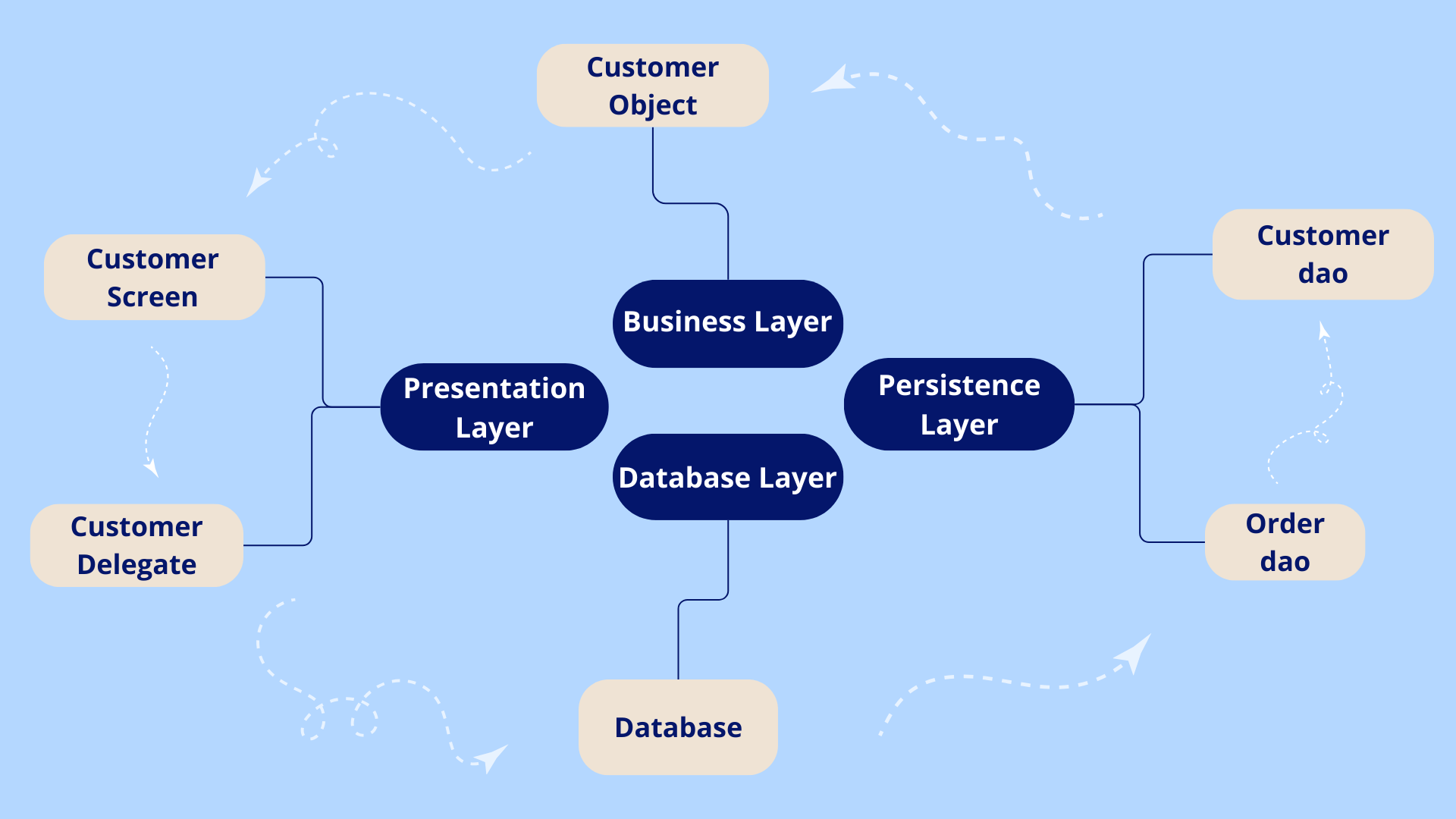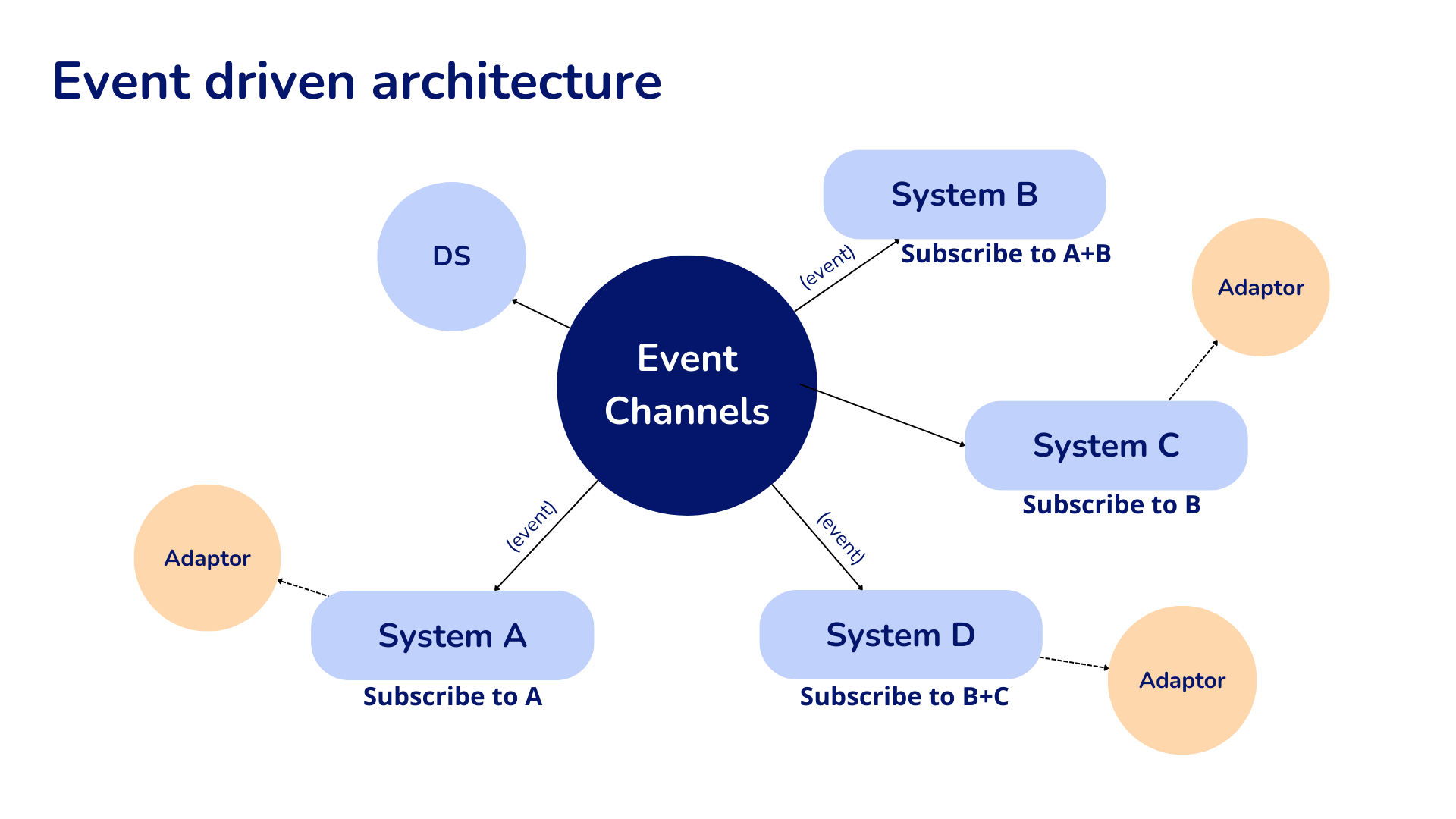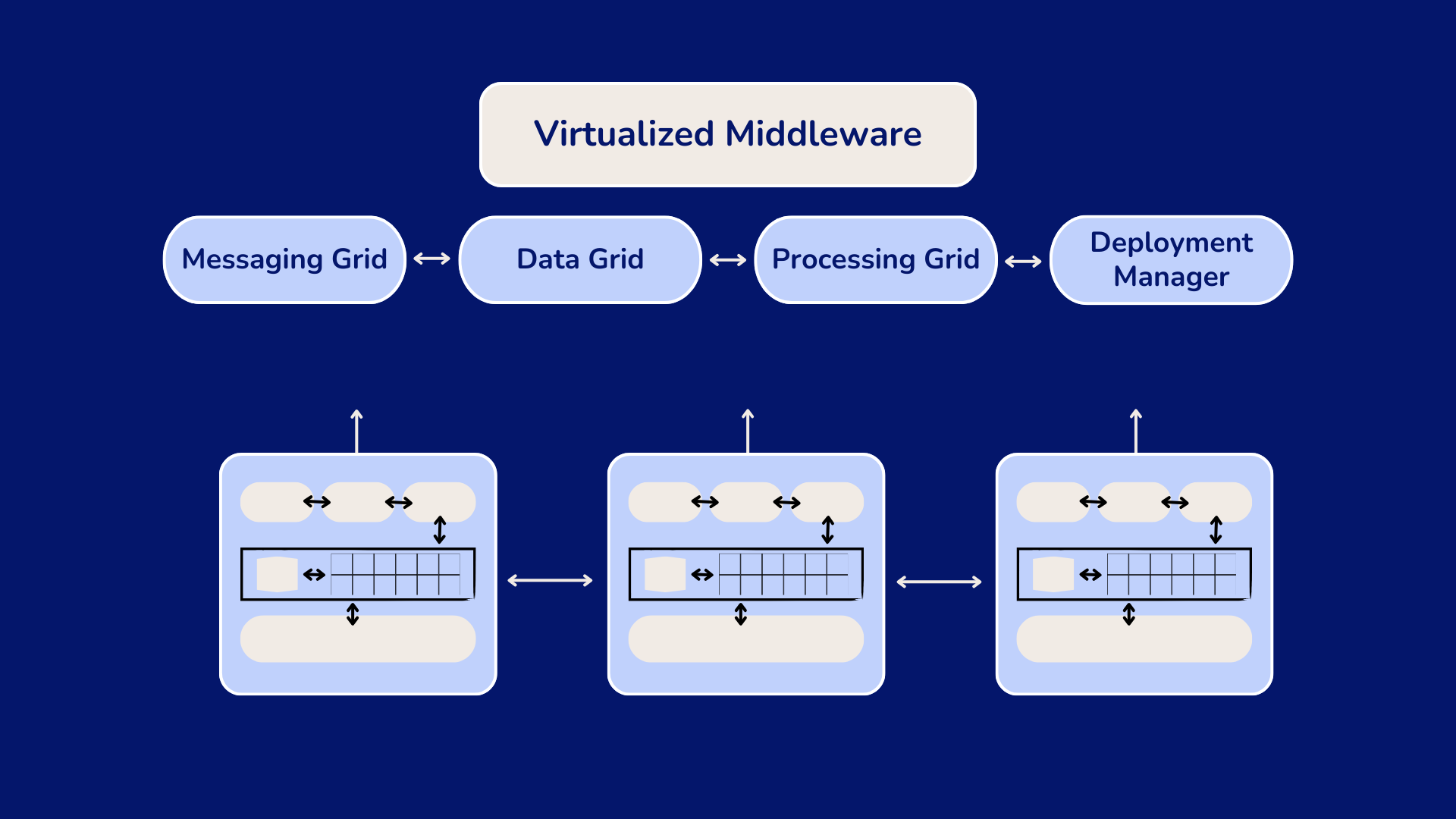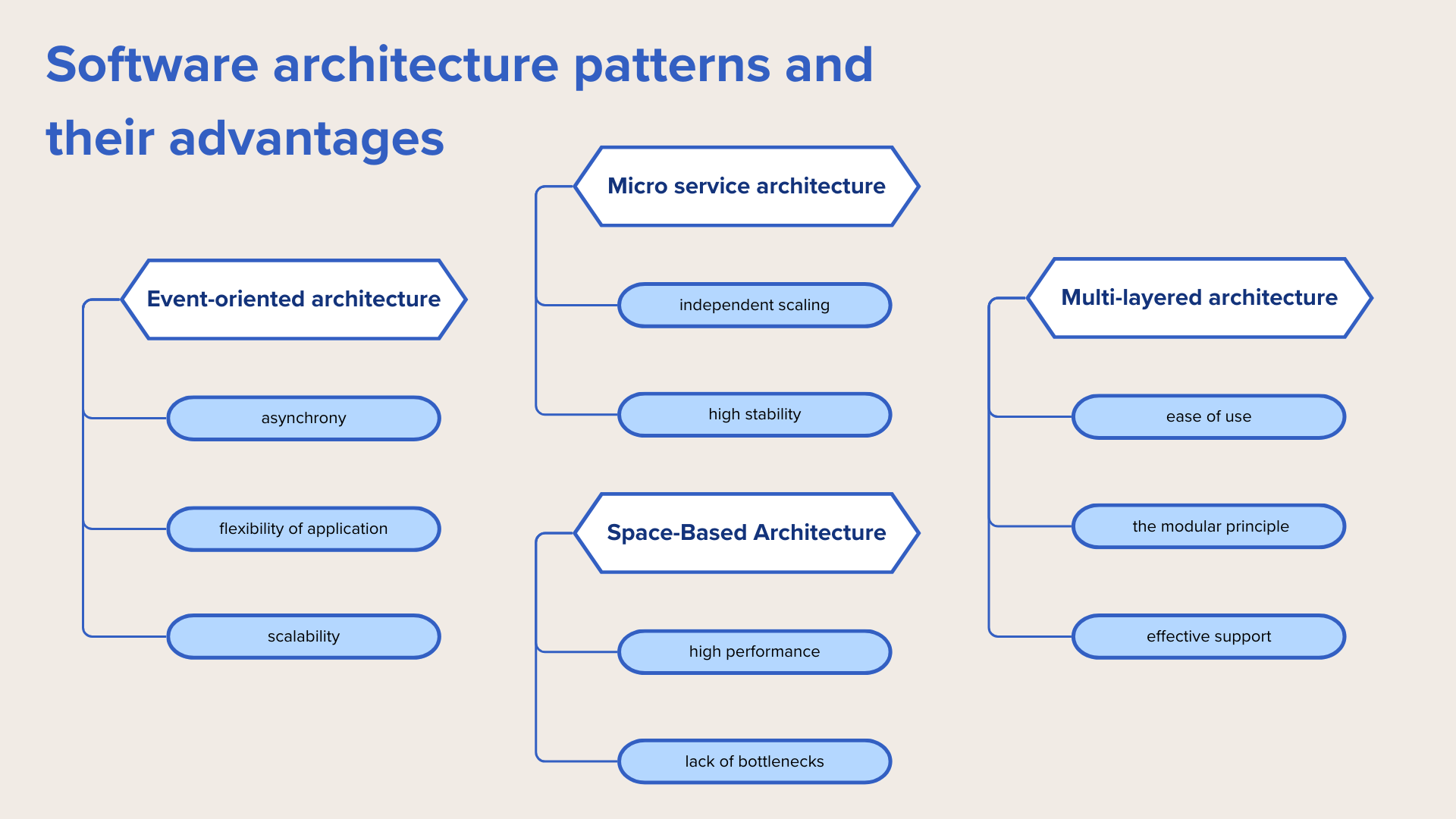Software Architecture Patterns fundamental development tool


Selecting the appropriate architectural model is crucial to a project’s success in the hectic issue of programming. Software architecture patterns aid in the structuring and grouping of code to make programs scalable, adaptable, and simple for maintenance in the future. We shall discuss the primary architectural patterns, their characteristics, and applications in this post. We will also go over the significance of selecting the appropriate architectural model based on the project’s particulars and how this can impact the development process.
Software architectural patterns are well recognized approaches to system organization that assist programmers in creating scalable and dependable programs. These solutions specify the interactions between system components and offer standardized design methodologies. There are several types of software architecture, each of which has its advantages and drawbacks.
Selecting the incorrect pattern might cause problems with scalability, performance, and system support. There is no necessity to implement complicated patterns like microservices in small and uncomplicated projects, while large distributed systems need scalable and flexible solutions.
Modern software development architecture has come a long way from simple monolithic applications to complex microservice and event-oriented systems. Scalability and performance may now be managed more effectively because of the rise in popularity of flexible and adaptive designs like event-oriented systems and microservices. The use of these patterns allows development teams to expand, to maintain, and to update massive programs by dividing them up into smaller, more manageable components, each with a distinct function. There are various types of patterns used by developers: Layered, Client-Server, Event-Driven, Microkernel, Microservices, Broker, Event-Bus, Pipe-Filter, Blackboard, Space-Based and Component-Based patterns. We will dwell into details of some mentioned.
Understanding the layered approach
Layered Architecture divides the system into layers, each of which performs a specific function, such as representation, logic, and data manipulation. This is one of the most common architecture design patterns used in applications. A special feature of the structure is that when components are placed on horizontal levels, the interaction is built vertically, and each level uses the services of the previous one.
Advantages and disadvantages
The advantages of a multi-layered architecture include ease of management, clear structure and modularity. The layered pattern makes it easy to write applications quickly. At the same time, this is also a disadvantage, as it complicates the scalability of large applications. When scaling an architecture of this type, it is difficult for developers to separate layers and there is a need to scale the entire application. This process uses plenty of resources and can contribute to loss of efficiency.
Best practices and recommendations for implementation
The layered pattern, widely used in the development of programs, characterized by a clear separation of functional tasks and maintenance. When implementing a multi-layered architecture, it is important to maintain strict isolation between layers and avoid mutual dependencies between them. This improves maintainability and simplifies testing.
Examples and applications
The multi-layered architecture is ideal for web applications, business applications, and enterprise systems where code structure and reliability are significant. For instance, ERP, CMS, CRM (HubSpot), social media platforms as Facebook, LinkedIn, online learning platforms (Coursera), and also LibreOffice, WordPress, Joomla, Drupal, Amazon, eBay, etc.

Key principles and characteristics
Microservices design, in particular, makes it easier for individual services to be developed, deployed, and scaled independently. Teams can work on multiple portions of an application at the same time without crashing the system, which leads to increased agility. Additionally, it offers resilience because a single service’s failures do not always impact others. On the other hand, event-driven design improves real-time processing power and lets systems react quickly to events or changes as they happen. Microservice architecture has become especially popular due to its flexibility and scalability. Each microservice is responsible for a specific business logic and can develop independently of the others.
Advantages and challenges
The main advantage of microservices is the ability to develop and update individual parts of the system independently of each other. If one service fails, it does not bring down the entire system. However, the complexity of managing multiple services, integrating them, and monitoring them can pose significant challenges.
Design and implementation of microservices
Successful implementation of microservices requires careful planning. It is necessary to pay attention to the interaction between services and their isolation to minimize dependencies.
Examples of successful implementations
Microservice architecture is being used by businesses like Netflix, Amazon, Spotify, Uber, Walmart, etc, In the case of Spotify, microservices patterns aim to manage various functionalities such as playlists, recommendations, and user libraries. Walmart e-commerce platform chose this pattern type to handle high traffic spikes during peak shopping periods.

This pattern is predicated on occurrences that cause systemic behaviours. High levels of scalability and flexibility are offered by the event-oriented design. The components of this different architectures include publishers and subscribers, where publishers send events and subscribers respond to them. In this architecture, components communicate by emitting and reacting to events.
Benefits and drawbacks
It is widely used in systems that need to be highly scalable, decoupled, and able to respond to changes or updates in real-time. One of the key advantages is the ability to scale the system by adding new components without having to modify existing ones. The main problems of the event-oriented architecture are related to state tracking and error handling. Proper event system design can significantly minimize these risks.
Integration with other architectural patterns and use cases
Event-oriented architecture is often used in combination with microservices to create flexible and scalable systems. This pattern is good for applications that use real-time data. E-commerce platforms use EDA to handle various workflows such as order placement, inventory updates, and shipping notifications. Therefore, we can mention Amazon as an example too. Real-time financial systems as NASDAQ, Robinhood, some IoT systems as Nest, Philips Hue also use EDA patterns.

The space-Based architecture is used to solve scalability and performance problems by using a distributed data space. The key components of the Space-Based architecture are the data space and distributed nodes that jointly process requests and data.
Advantages and challenges
This pattern avoids issues related to central databases or single points of failure by distributing processing and data storage across a grid. This approach allows specialists to dynamically scale the system and evenly distribute the load between nodes. Space-Based architecture is difficult to implement and requires careful planning to ensure data consistency and management of a distributed system.
Examples of successful application
This pattern is most suitable for highly loaded systems such as stock exchange platforms or real-time data processing systems. For instance, Amazon, Alibaba, Facebook, online games (Fortnite, World of Warcraft), Netflix, Hulu, YouTube, etc.

While selecting an architectural pattern, there are numerous things to consider, the most important ones being performance, simplicity of support, and scalability. These factors are essential because the design must be able to accommodate modifications in the future in addition to meeting the project’s present requirements. The architectural solution should make it easy to scale the system in case the project calls for quick expansion, such as when the number of users or data volume increases. System performance is crucial since it has an immediate impact on response times and the speed at which requests are processed. Another primary factor is ease of support, which dictates how simple it will be to update and correct errors down the road.
The project needs must be considered when selecting particular patterns. It is frequently preferable to employ simpler methods, like a layered design, for tiny applications. It offers an easy-to-implement and manages system structure that is both explicit and structured. However, microservices or event-oriented architecture are more appropriate for larger projects that demand a great degree of flexibility and scalability. By using these patterns, you may divide the system into different parts that can be expanded and developed independently of one another.
Combining several patterns (also called hybrid approach) could be the best strategy in some situations. By combining the benefits of numerous contemporary design patterns, hybrid architectures enable you to create a system that is tailored to the particular requirements of the project. For instance, you can boost the system’s adaptability and responsiveness when handling a high volume of requests by combining microservices with an event-oriented architecture.
As for future trends, architecture patterns in software engineering will increasingly focus on flexibility and adaptability. This is because contemporary applications need to adapt fast to shifting market demands and technological advancements. The utilization of microservices and event-driven solutions is expected to persist, since they offer developers the means to design systems that are easily scalable, sustainable, and adaptable.

Choosing the right architectural pattern is the key to a successful project. Understanding the features of various patterns, such as multilayer architecture, microservices, event-oriented systems and Space-Based architecture, will help developers build efficient and flexible systems.
PNN Soft provides professional services and modern design patterns for implementation of various architectural solutions, helping businesses create modern, productive and scalable applications.